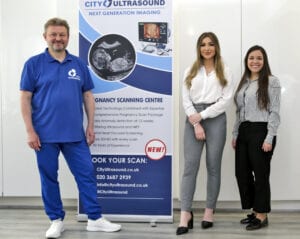Understanding The Statistics Behind NIPT (Non-Invasive Prenatal Testing)
Summary:
The best NIPT will be really good at detecting problems (high sensitivity) and correctly saying everything is fine (high specificity). It should hardly ever make mistakes by saying there’s a problem when there isn’t (low false positive) or missing a problem and saying everything is okay (low false negative). If the test says there’s an issue, it should be highly likely to be true (high positive predictive value). And if it says everything is fine, it should be trustworthy (high negative predictive value).
NIPT (non-invasive prenatal testing) is a type of genetic test used to screen for certain chromosomal abnormalities and genetic syndromes in a developing fetus. The test involves analyzing a sample of the mother’s blood to look for fragments of DNA from the fetus.
It’s good to know the statistical terms related to NIPT performance because they help you understand how accurate the test is and what the results mean. You might be wondering why it’s important to understand those “boring statistics” related to NIPT (non-invasive prenatal testing) performance, but trust us, it’s actually really helpful! Knowing these statistical terms can make a big difference in your pregnancy journey.
By understanding these terms, you can make informed choices about your prenatal care. If the test is really accurate, you might feel more confident in the results and decide not to have further tests. But if the test has limitations, you might want to consider additional testing to get more clarity. It’s all about making sure you have the information you need to make the best choices for you and your baby.
So, while statistics might seem boring at first, they play a vital role in your understanding of the test’s accuracy, interpretation of results, and decision-making process. Embracing these statistics can give you more confidence and peace of mind throughout your pregnancy journey.
Please see below the most important statistical terms related to NIPT performance:
- Sensitivity: This measures how good the test is at correctly identifying fetuses that have a chromosomal abnormality. A high sensitivity means that the test is good at detecting most cases of abnormality. For example, if a test has a sensitivity of 99%, it means that out of 100 fetuses with a chromosomal abnormality, the test correctly identifies 99 of them.
- Specificity: This measures how good the test is at correctly identifying fetuses that do not have a chromosomal abnormality. A high specificity means that the test avoids identifying normal fetuses as abnormal. For example, if a test has a specificity of 99%, it means that out of 100 normal fetuses, the test correctly identifies 99 of them as normal.
- Positive predictive value (PPV): This is the probability that a positive test result is a true positive. In other words, if the test comes back positive, the PPV measures the likelihood that the fetus actually has a chromosomal abnormality. For example, if a test has a PPV of 95%, it means that out of 100 positive test results, 95 of them are true positives.
- Negative predictive value (NPV): This is the probability that a negative test result is a true negative. In other words, if the test comes back negative, the NPV measures the likelihood that the fetus does not have a chromosomal abnormality. For example, if a test has an NPV of 99%, it means that out of 100 negative test results, 99 of them are true negatives.
- False positive rate (FPR): This measures how often the test gives a positive result for a normal fetus. A low FPR means the test is good at avoiding false positives. For example, if a test has an FPR of 1%, it means that out of 100 normal fetuses, the test gives a false positive result for only 1 of them.
- False negative rate (FNR): This measures how often the test gives a negative result for an abnormal fetus. A low FNR means the test is good at avoiding false negatives. For example, if a test has an FNR of 1%, it means that out of 100 fetuses with a chromosomal abnormality, the test gives a false negative result for only 1 of them.
When we look at how well NIPT works, it’s important to consider a bunch of statistics together. A good test will have high sensitivity, high specificity, low false positive and false negative rates, and high PPV and NPV.
Just remember, the performance of NIPT can vary depending on the specific test and the group of people being tested. So, when you get the results, make sure to understand how good that particular test is.
Considering all these statistics helps us know how reliable the test is and what the results mean for you and your baby. It’s about making informed choices and getting the best care possible.
Learn more about the NIPT providers we use:
Harmony Test by Roche: https://harmonytest.roche.com/global/en/home.html
Panorama Test by Natera: https://www.natera.com/womens-health/panorama-nipt-prenatal-screening/
PrenatalSAFE by Eurofins: https://www.eurofins.ie/biomnis/our-services/medical-testing/non-invasive-prenatal-test-nipt-prenatalsafe/
Unity Test by BillionToOne: https://unityscreen.com/







